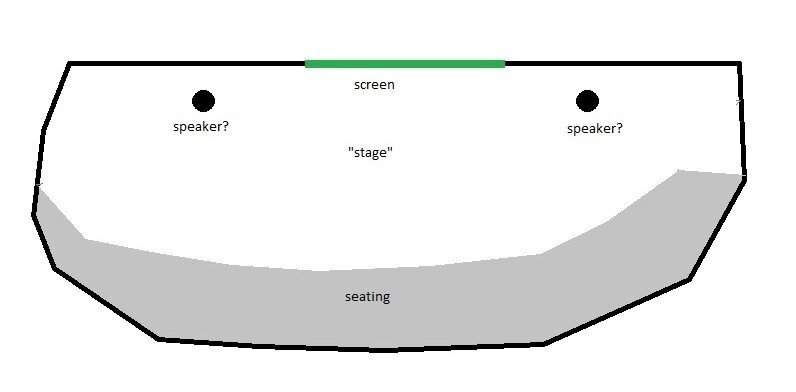It doesn't necessarily have to
cover all that. The $750 per could be seen as more of an aspirational goal. If we had to end up spending $2,000, say, I *think* we could
swing it. For cabling and such, I expect to be able to pull from our existing
stock.
If you go with powered speakers then you may need to get
power to them, and keep in mind that they may be considered permanently installed so it may not be able to be anything considered temporary
power, so what might that cost? Do the speakers automatically
power themselves on and off or do you need to
address turning them on and off? If you don't go with powered boxes then you need an amp and ideally some processing, so what is that associated cost? Then there is flying hardware and any substructure needed in order to attach to the structure and any associated cost. The
point is simply that if you have to work within a budget then try to account for all the associated costs, there are too many already out there who spent everything on the gear and have it sitting in the boxes because they don't have the money to implement it.
To clarify one
point, are you looking at two speakers for addressing coverage in
mono or for trying to achieve stereo (and if so, do you really need stereo)? And a related reminder that since the intended use includes live vocal reinforcement, consider not just the coverage of the audience but also the coverage on
stage as that will affect potential
gain before
feedback. Pictures or sketches of the
venue might really help as I am not
clear on the relation of the '
stage' to the audience area and the potential
speaker locations and it almost sounds like the speakers might be behind the
stage, which could be a significant factor.
Also related to the coverage, and especially to that on
stage, the reality is that most compact speakers will have a
pattern that varies significantly from the nominal
pattern at different frequencies. It is physics at
play in the size of the
horn, the
spacing of the drivers,
etc. And making this more challenging is that the related information to be able to assess the actual
pattern is often not provided for those products. Just using the Alto TS115A as an example since it was mentioned, its
crossover is at 2,500Hz, so much of the critical portion speech range is apparently reproduced by the 15"
driver rather than the
horn and I seriously doubt that the nominal
pattern applies to the
woofer. That is fairly typical and it's not unusual to find compact two-way speakers for which the nominal
pattern only applies over a limited range above 4kHz.



